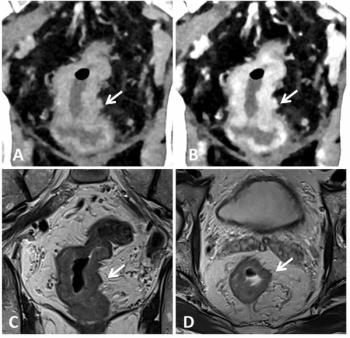
High-Strength MRI May Leave Patients Exposed to Mercury from Dental Fillings
Amalgam fillings may pose a risk not only to patients, but to staff.
Mercury from amalgam fillings may be released when patients are exposed to high-strength MR imaging, according to a study published in the journal Radiology.
Researchers from Turkey sought to evaluate ex vivo mercury release from dental amalgam after 7.0-T and 1.5-T MRI. “In a completely hardened amalgam, approximately 48 hours after placing on teeth, mercury becomes attached to the chemical structure, and the surface of the filling is covered with an oxide film layer,” lead author, Selmi Yilmaz, Ph.D., a dentist and faculty member at Akdeniz University in Antalya, Turkey, said in a release. “Therefore, any mercury leakage is minimal.”
The researchers evaluated 60 caries-free molar or premolar teeth that had been extracted for clinical indications. Two-sided cavities were opened in each tooth and amalgam fillings applied. After nine days, two groups of 20 randomly selected teeth were placed in 20 mL of artificial saliva immediately followed by 20 minutes of MRI exposure at 1.5 or 7.0 T. A control group of
teeth was placed in artificial saliva without undergoing MRI exposure. The teeth were removed from the artificial saliva 24 hours later, and the saliva was analyzed for mercury content by using inductively coupled plasma mass spectrometry.
The results showed the mean mercury content of the artificial saliva was 673 micrograms/L ± 179 in the 7.0-T MRI group, 172 micrograms/L ± 60 in the 1.5-T MRI group, and 141 micrograms/L ± 152 in the control group. The mercury content in the 7.0-T group was greater than that in
both the 1.5-T and the control group. There was no statistically significant difference in mercury content between the 1.5-T and control groups.
“In our study, we found very high values of mercury after ultra-high-field MRI,” Yilmaz said in the release. “This is possibly caused by phase change in amalgam material or by formation of microcircuits, which leads to electrochemical corrosion, induced by the magnetic field.”
The researchers concluded that further studies may be warranted to evaluate the relationship between high-field MRI and the release of mercury from dental amalgam. “Although it is not clear how much of this released mercury form is absorbed by the body, the study findings indicate that amalgam fillings may pose a risk not only to patients, but to staff, too,” Yilmaz said.
Newsletter
Stay at the forefront of radiology with the Diagnostic Imaging newsletter, delivering the latest news, clinical insights, and imaging advancements for today’s radiologists.



























